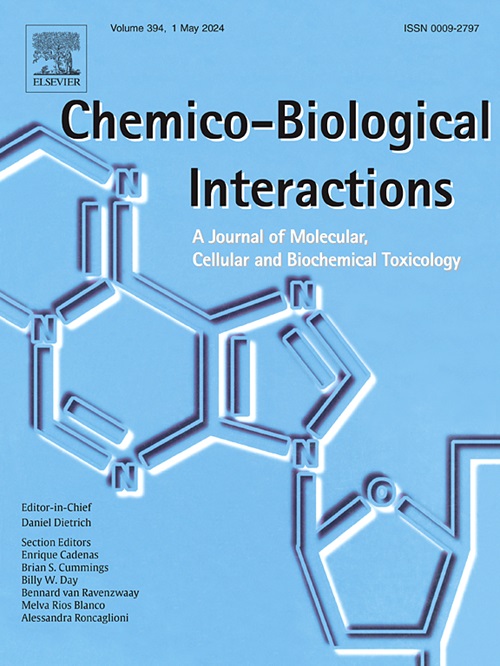Pan-cancer analysis of acetylcholinesterase (AChE) expression by a data-driven approach: future directions of AChE in cancer neuroscience
IF 5.4
2区 医学
Q1 BIOCHEMISTRY & MOLECULAR BIOLOGY
引用次数: 0
Abstract
There is evidence that the expression of acetylcholinesterase (AChE) is associated with the development of certain cancers. However, there are still insufficient studies to reveal the correlation between AChE expression and cancer development and prognosis from the perspective of pan-cancer. In this study, a comprehensive bioinformatics analysis of the pan-cancer expression signature of AChE was conducted through a data-driven approach. Pan-cancer datasets were obtained through online databases, including the Cancer Genome Atlas and Genotypic Tissue Expression databases. The correlation between ACHE expression and cancer prognosis was predicted by survival analysis. The results showed differences in the expression levels of the ACHE gene in cancer and paired normal tissues. However, the alterations in cancer tissue ACHE expression were different depending on the cancer type, e.g., higher ACHE expression was found in pancreatic adenocarcinoma, and lower ACHE expression was found in glioblastoma multiforme (GBM). In addition, ACHE expression was found to have dual prognostic significance, e.g., cutaneous melanoma with higher levels of ACHE expression had better overall survival, while the opposite outcome was found in uveal melanoma. The function of ACHE-expressing cells in primary and metastatic tumors was predicted using single-cell RNA sequencing datasets from patients with GBM. Differences in cell type preferences for ACHE expression were found in primary and metastatic GBM, and different functional enrichment features were identified, suggesting a potential role of ACHE expression in GBM progression. Overall, our study highlights the potential of AChE as a target for cancer research.
基于数据驱动的泛癌乙酰胆碱酯酶(AChE)表达分析:AChE在癌症神经科学中的未来方向
有证据表明乙酰胆碱酯酶(AChE)的表达与某些癌症的发生有关。然而,目前还没有足够的研究从泛癌角度揭示AChE表达与肿瘤发展及预后的相关性。本研究通过数据驱动的方法对AChE泛癌表达特征进行了全面的生物信息学分析。泛癌症数据集通过在线数据库获得,包括癌症基因组图谱和基因型组织表达数据库。通过生存分析预测ACHE表达与肿瘤预后的相关性。结果显示,ACHE基因在癌组织和配对正常组织中的表达水平存在差异。然而,不同类型肿瘤组织中ACHE表达的变化不同,如胰腺腺癌中ACHE表达较高,而多形性胶质母细胞瘤(GBM)中ACHE表达较低。此外,我们还发现ACHE表达具有双重预后意义,如ACHE表达水平较高的皮肤黑色素瘤总生存率较高,而葡萄膜黑色素瘤则相反。使用来自GBM患者的单细胞RNA测序数据集预测原发性和转移性肿瘤中表达ache的细胞的功能。在原发性和转移性GBM中发现了ACHE表达的细胞类型偏好差异,并鉴定了不同的功能富集特征,提示ACHE表达在GBM进展中的潜在作用。总的来说,我们的研究强调了乙酰胆碱酯酶作为癌症研究靶点的潜力。
本文章由计算机程序翻译,如有差异,请以英文原文为准。
求助全文
约1分钟内获得全文
求助全文
来源期刊
CiteScore
7.70
自引率
3.90%
发文量
410
审稿时长
36 days
期刊介绍:
Chemico-Biological Interactions publishes research reports and review articles that examine the molecular, cellular, and/or biochemical basis of toxicologically relevant outcomes. Special emphasis is placed on toxicological mechanisms associated with interactions between chemicals and biological systems. Outcomes may include all traditional endpoints caused by synthetic or naturally occurring chemicals, both in vivo and in vitro. Endpoints of interest include, but are not limited to carcinogenesis, mutagenesis, respiratory toxicology, neurotoxicology, reproductive and developmental toxicology, and immunotoxicology.

 求助内容:
求助内容: 应助结果提醒方式:
应助结果提醒方式:


